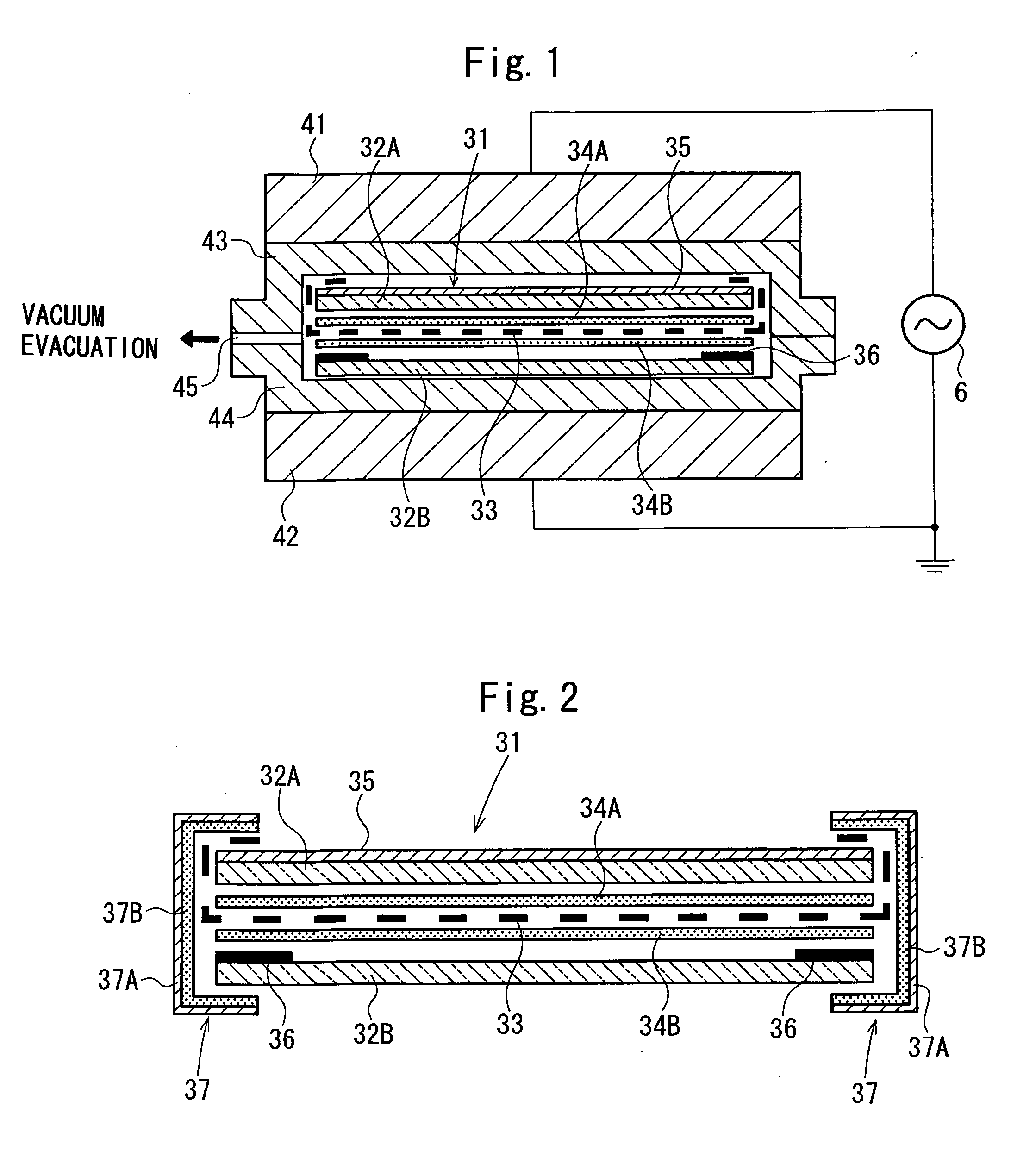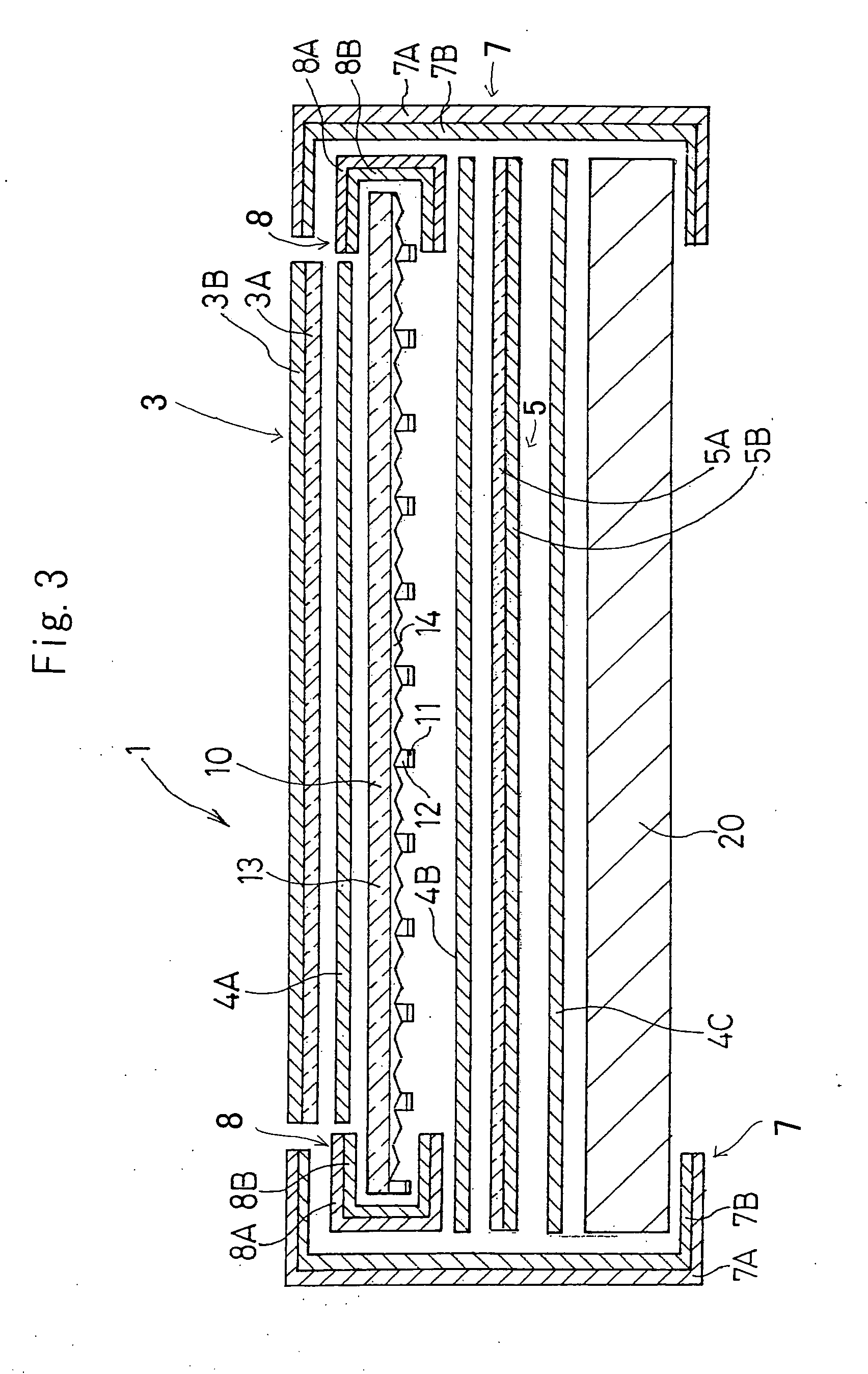Manufacturing methods of electromagnetic-wave shielding and light transmitting window material, display panel, and solar battery module
- Summary
- Abstract
- Description
- Claims
- Application Information
AI Technical Summary
Benefits of technology
Problems solved by technology
Method used
Image
Examples
example 1
[0092] By using 2 glass plates having a thickness of 2.0 mm as a front surface-side transparent substrate, after high-frequency heating electrodes were extended from an electromagnetic-wave shielding etched mesh film, this film was laminated by two adhesive resin films located at a top and a bottom side. Subsequently, after the laminate thus formed was sandwiched by two silicone rubber sheets, and vacuum deaeration was performed, heating was performed at a temperature of 90° C. for 10 minutes, so that pre-pressure bonding was performed. Then, after pressing was performed using pressing plates, a high frequency of 13.56 MHz was applied to the pressing plates or the electrodes extended from the etched film to perform high-frequency heating, and in addition, heating was also performed by heaters provided for the pressing plates, so that cross linking of adhesive interlayer films was performed at 130° C. for a predetermined time.
After the heating, a peeling test was performed, and it ...
example 2
[0122] After each film was formed from an EVA resin composition containing the following components, embossing was performed, so that a transparent EVA film was manufactured.
[0123] [Components of EVA Resin Composition for Transparent EVA Film (Parts by Weight)]
[0124] EVA resin: 100
[0125] Cross-linking agent (1,1-bis(t-butylperoxy)-3,3,5-trimethyleyelohexane): 2.0
[0126] Silane coupling agent (γ-methacryloxypropyltrimethoxysilane): 0.5
[0127] Anti-yellowing agent: 0.1
[0128] Cross-linking auxiliary agent (triallyl isocyanurate): 2.0
[0129] Ultraviolet absorber (2-hydroxy-4-octylbenzophenone): 0.03
[0130] The transparent EVA films thus formed were used as a rear surface side sealing film and a front surface-side sealing film, and solar battery cells (silicon power generation elements) were sealed between a glass plate having a thickness of 3 mm and a back cover 2 made of a fluorinated polyethylene film having a thickness of 38 μm, so that the solar battery was formed. After electrod...
PUM
| Property | Measurement | Unit |
|---|---|---|
| Current | aaaaa | aaaaa |
| Current | aaaaa | aaaaa |
| Digital information | aaaaa | aaaaa |
Abstract
Description
Claims
Application Information
 Login to View More
Login to View More - R&D
- Intellectual Property
- Life Sciences
- Materials
- Tech Scout
- Unparalleled Data Quality
- Higher Quality Content
- 60% Fewer Hallucinations
Browse by: Latest US Patents, China's latest patents, Technical Efficacy Thesaurus, Application Domain, Technology Topic, Popular Technical Reports.
© 2025 PatSnap. All rights reserved.Legal|Privacy policy|Modern Slavery Act Transparency Statement|Sitemap|About US| Contact US: help@patsnap.com



